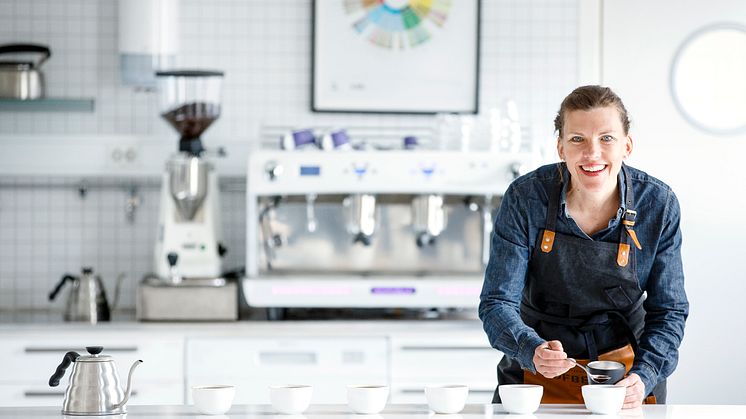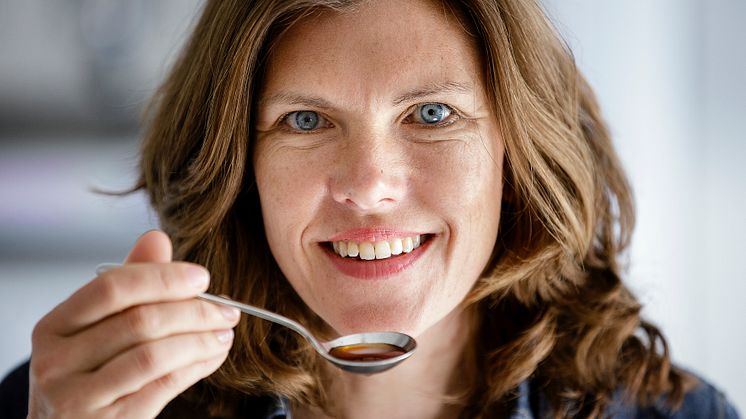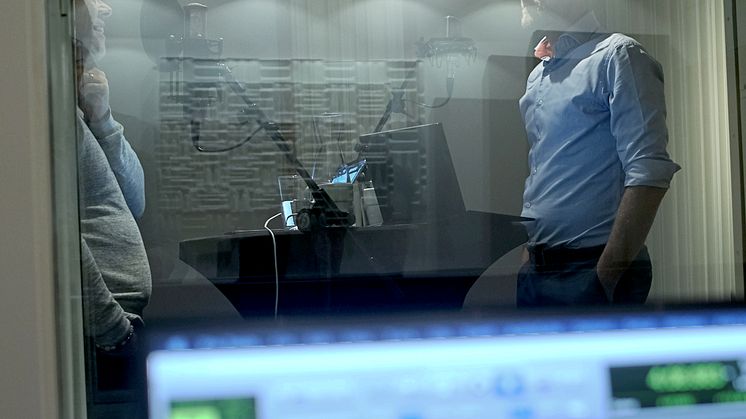
Blog post -
Anna predicts the coffee trends for 2020
What´s brewing in the coffee industry? What´s hot and not? Anna Nordström, Specialty Coffee Manager at Löfbergs, predicts the hottest trends for 2020.
Coffee Prices Crisis
Coffee prices on the commodity market have been at historic lows over the past two yearsand the topic of prices has been a deservedly hot one in the coffee industry. Calls from farmers and producer groups addresses that prices are often unsustainably low, not meeting costs of production and threatening the supply of quality coffee as a whole.
Transparency
“How much of the cost of a cup of coffee comes from transporting the coffee from its place of origin, from roasting loss, or from the labour at the coffee shop?”
The coffee chain is complex, and it can be hard to pin-point all of the factors influencing the final price of a cup of coffee. The Specialty Coffee Association has launched a revised version of its graphic “Economics of the Coffee Supply Chain” which provides a broad representation of the economics of the coffee supply chain. This could be potentially useful for a better understanding of the typical costs for specialty coffee.

Open Books
To publish FOB*-prices on labels is one way of raising awareness of the price crisis and show how much a roaster have paid for the coffee. With better access to information, producers start owning more of the process. With blockchain and other verifying systems you can follow how much of the coffee price that is paid direct to the farmers.
*FOB (Free On Board) is the price of the coffee at the port of origin, before being shipped.
Hybrids and Quality Robusta
Many farmers have been forced to sell their farms as they no longer are profitable. Another way to tackle coffee price crisis and climate change is to grow new coffee varieties that yield better and cope better with diseases. New hybrids, that also taste great, are starting to find their way to the market. Centroamericano and Starmaya are such examples.
As Robusta is a higher producing, more resilient species than Arabica, it has become more important as it now accounts for 40% of global coffee production. Robusta has often been overlooked because of its lower cupping quality but the last years there has been a boom in coffee genetics that aim to breed Robusta that enhance flavours. Coffee Quality Institute recently updated their cupping and quality standards covering fine Robusta.
Go East
East Asia is the fastest-growing coffee market. One tiger is the China-based coffee company, Luckin coffee, founded in October 2017. By the end of 2019 they had more than 4,500 stores in China which make them larger than Starbucks.
Also in Europe things are happening in the east. The fastest growing coffee market is Romania +30%, followed by Kazakhstan and Ukraine, compared to Europe total at +3%.
Iced Coffee Is So Hot
Cold brew is the fastest growing coffee beverage and is turning into a mainstream hit, thanks to its smooth flavour profile and variety of serving options. This category is no longer seen as a novelty but a booming option for grown-ups. Unsweetened iced coffee also takes off right now.

No Fuss
Trendy coffee shops are removing pour-overs from the menu due to price point and fussiness and replace it with high end batch brews. Coffee on tap is another trend. More signs of the wish for more convenient servings is that specialty instant coffee and single serve coffee bags now is OK.
Decaf is a growing segment in western Europe. Ordinary decaf is growing, specialty coffee decaf even more, +10% last year.

Custom Ordering, Pick Up and Delivery
Custom orders have also been on the rise for a while, especially in the U.S. You create your own drink from scratch and can choose the type of drink, size, and any toppings or syrup flavours. After you have put in your order, the barista makes the drink that has everything you wanted.
To order online and pay before you pick up, or have your coffee delivered, is booming in larger cities. By collecting customer data through apps, the coffee shop knows who likes what kind of coffee, where, at what time, and how often. That enables them to improve services and hopefully serve better coffee.
Coffee Subscriptions
Home deliveries for specialty coffee is also growing and last Christmas we did see a lot of beautiful advent calendars that highlighted coffee from micro roasters.
Superfood
The health trend is strong with several products that claim a variety of health benefits, from increased productivity to boosting energy. Teas, roots, mushrooms and green coffee are just some examples.
Keto coffee, also known as bulletproof coffee which blends coffee with butter or coconut oil is appearing on shelves and menus. This is meeting the demands of those on a high-fat, low-carb diet. Superfood coffees infused with maca and collagen are also being added for their health appeal. Yerba mate, the caffeine rich tea from South America is another popular drink.
Gut health and sugar reduction are also driving the demand for natural and organic products like espresso kombucha.
Flower Power Coffee
More countries are legalizing cannabidiol (CBD), and CBD-infused coffee is booming and marketed as a perfect combination: “you feel a nice, natural peacefulness while still feeling alert.”
Organic, Natural and Ethical
There is an increased demand for ethical and sustainable choices as consumers become more concerned over the environment. The volume of Fairtrade coffee sold grew by 15% in the U.S. last year and the global organic coffee market is expected to grow rapidly the coming years.
Sustainability, the New Normal
Waste management is having an impact on every part of the coffee industry. Reducing packaging material and sourcing more sustainable materials has become the new normal.
To refurbish espresso machines, and at same time make huge financial savings, is one way to reduce environmental impact. Reusable coffee cups are another. Single use paper/plastic coffee cups are collected, recycled (plastic lid included) and turned into reusable cups. We are also facing a lot of initiatives of circular thinking – from cradle to cradle.
Inclusion, Togetherness and Hygge
Addressing gender equity is a growing focal point for quality and mission focused coffee companies around the planet. The Partnership for Gender Equity, founded by the Coffee Quality Institute, is investing big time in gender equity at origin, with a twofold return in the form of both social impact and increased supply-chain stability.

Snob Free Zone
People are starting to question the excluding context of the coffee community and snob free coffee shops with a focus on representation are popping up. Cafés with more content; flea market, live music, exhibitions or community events is trending, and Hygge and Togetherness are the current buzzwords.
Maximalism
Minimalistic Scandinavian design has dominated the last decade with its light colours and minimalistic style. When we enter the 2020s, we start to see a reaction to the clean lines with a more playful, colourful and cosines. Go ahead with patterns, colours and frills on everything from interiors to coffee packages. The more the better!
Instacafé
Coffee tourism is growing, not only to producing countries but also to coffee destinations in larger cities. The young generation, more sober than ever, are travelling to visit world famous coffee bars. It still looks like it’s very important that the place is instagrammable.
Have a trendy 2020!
Anna Nordström,
Specialty Coffee Manager at Löfbergs



